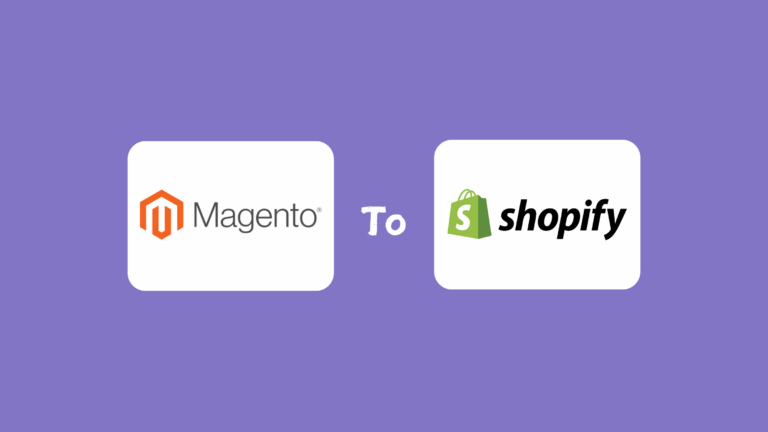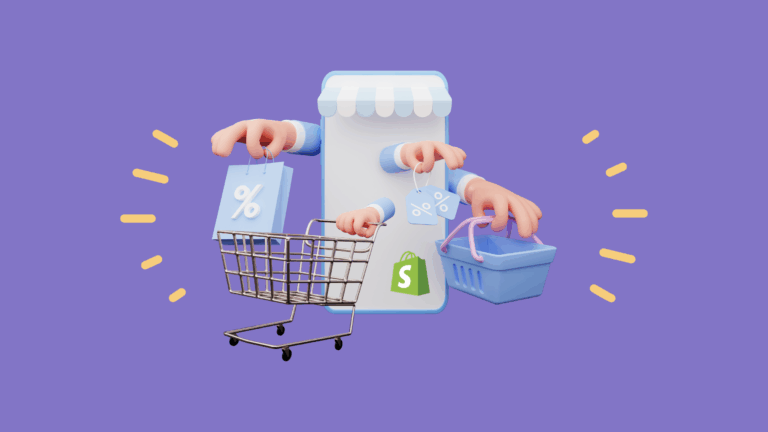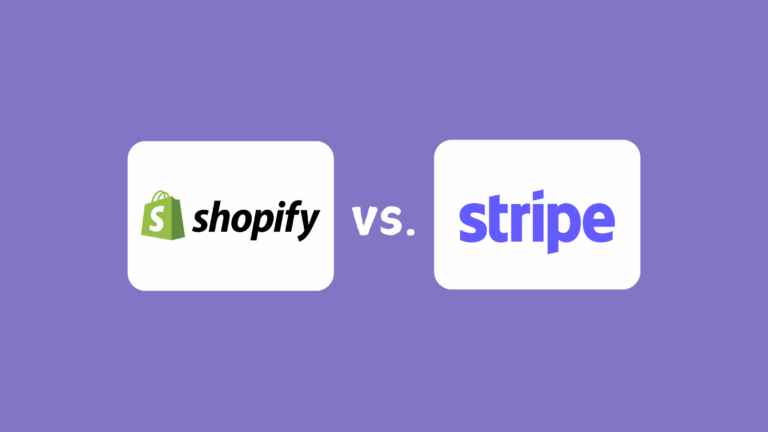How to Build a Successful One-Product Shopify Store (with Examples)
Think of your favorite food truck—the one that makes the most incredible gourmet tacos and nothing else. They’re not trying to be a full-service restaurant; they’re obsessed with perfecting the taco. That’s the exact philosophy behind a one-product store. This guide will show you how to apply that obsessive focus to build a successful e-commerce brand.
What Is One Product Store
First of all, a one-product store isn’t always limited to a single item. It’s an online store built around one central, “hero” product, often supported by a small, curated selection of directly related accessories. This focused strategy builds a strong brand, establishes the owner as an expert, and gives customers a simple shopping experience.
Ultimately, it’s all about doing one thing and doing it incredibly well.
So, you may have the question: what is the difference between a one-product store and a niche store?
While both one-product and niche stores move away from the “sell everything” model, they represent two distinct levels of focus.
A niche store sells a variety of related products to a specific audience (e.g., gear for coffee lovers). In contrast, a one-product store is hyper-focused, dedicating its entire brand to a single “hero” item and its essential accessories. The latter is more about creating demand and telling the story of one specific product.
Think of the relationship this way: every one-product store is, by definition, a niche store—just an extremely specific one. In fact, many successful niche brands begin their life by perfecting a single hero product before expanding.
How to Decide If a One-Product Store Fits Your Business
For a new business, the choice is often straightforward: starting with a one-product store allows for incredible focus. However, this high-risk, high-reward strategy isn’t for everyone. It is a particularly challenging question for businesses that are growing and trying to decide whether to expand their product line.
Before committing to the one-product model—or choosing to stick with it—ask yourself these four critical questions to determine if your business fits for one-product strategy.
1. What makes your product stand out from competitors?
In a market full of multi-product stores, your single item can’t just be another option—it must be the option. A successful one-product store is built on an item that has a distinct “wow” factor.
- Solve a Problem Uniquely: Does your product solve a common pain point in a new or significantly better way?
- Superior Quality or Design: Is it crafted from superior materials, or does it feature an innovative design that competitors lack?
- Analyze the Competition: Read your competitors’ 1-star reviews. If your product directly solves the most common complaints their customers have, you have a powerful advantage.
Your product needs a clear, compelling reason to exist and capture a customer’s attention immediately.
2. Do you have a strong, defensible Unique Selling Proposition (USP)?
Your Unique Selling Proposition (USP) is the core reason someone should buy from you and not from anyone else. For a one-product store, your USP must be rock-solid.
- Is it patentable? If your product has a truly unique mechanism or technology, securing a patent is the strongest way to defend your business from copycats.
- Is it easily replicable? If you don’t have a patent, be honest about how easily a competitor could source a similar item. If it’s easy, your business model is vulnerable.
- Can your brand be your moat? Sometimes, the USP isn’t just the product but the brand story, the customer service, or the community you build around it. This “brand moat” can be just as difficult to replicate as a patent.
If your USP is weak or easily copied, a single-product model will be an uphill battle.
3. How do you build a memorable brand around a single product?
When you only sell one thing, your marketing can’t just be about features and specs. You must sell a story, a solution, and a lifestyle.
- Master Content Marketing: Your product is the star of the show. Create compelling content like how-to videos, blog posts detailing its benefits, user-generated content campaigns, and testimonials.
- Define Your “Why”: Why does this product exist? Who is it for? Your brand’s mission and values must resonate with your target audience on an emotional level.
- Become the Expert: A one-product store owner should be the world’s leading expert on that product. Use your expertise to build trust and authority through every piece of content you create.
4. How can you diversify revenue without adding new products?
A successful one-product store masterfully increases its Average Order Value (AOV) by selling more than just the core item at checkout.
- Essential Accessories: Offer items that directly enhance the main product. If you sell a high-tech water bottle, offer a custom cleaning brush or a protective silicone boot.
- Smart Bundles: Create attractive packages. A “Starter Kit” bundle could include the hero product plus its most popular accessory at a slight discount.
- Services and Subscriptions: Offer an extended warranty, a protection plan, or a subscription for refills if your product requires them (e.g., filters, pods). This creates recurring revenue and boosts customer lifetime value.
How to Run a Successful One-Product Shopify Store
Having a brilliant product idea is the first step, but launching a business with limited capital requires a smart, focused strategy. The one-product store model is the perfect solution, allowing you to concentrate your resources for maximum impact. Here’s a lean approach to building a successful brand from the ground up, using real-world examples as a guide.
1. Validate Your Product Idea Relentlessly
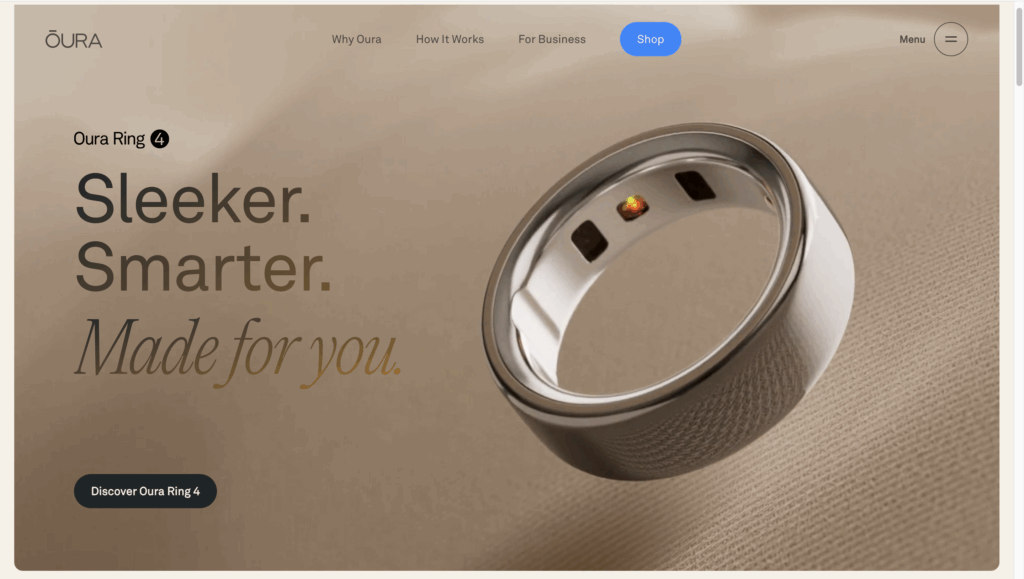
Shopify Store Example: Oura Ring
Consider Oura Ring, a company now valued at over $2.5 billion that succeeded by answering one question: how do you compete with a titan like the Apple Watch? Instead of building another smartwatch, they validated a different approach, winning by specializing where their competitors were weak.
Oura’s success is a masterclass in exploiting a competitor’s flaws with a superior product idea:
- It Solves the Pain Point of Comfort: Unlike a bulky smartwatch, the Oura Ring is a lightweight, seamless ring comfortable enough for 24/7 wear—especially during sleep—which leads to more consistent and accurate data.
- It’s a Passive Companion, Not a Distraction: With no screen or notifications, it tracks health without the constant digital noise of a smartwatch, appealing to users who want to disconnect.
- It Delivers High-Perceived Value: Its proprietary “Readiness Score” offers a simple, actionable insight that smartwatches lack, while its premium titanium design feels like fine jewelry, justifying its price. The subscription model also creates a powerful recurring revenue stream.
- It’s Radically Differentiated: The ring form factor created an entirely new category, allowing users to track their health while still wearing a traditional luxury watch—something impossible with an Apple Watch.
Oura’s rise proves how a deep understanding of a market’s needs can build a billion-dollar brand on a single, exceptionally well-validated product.
2. Craft a Highly Focused Landing Page
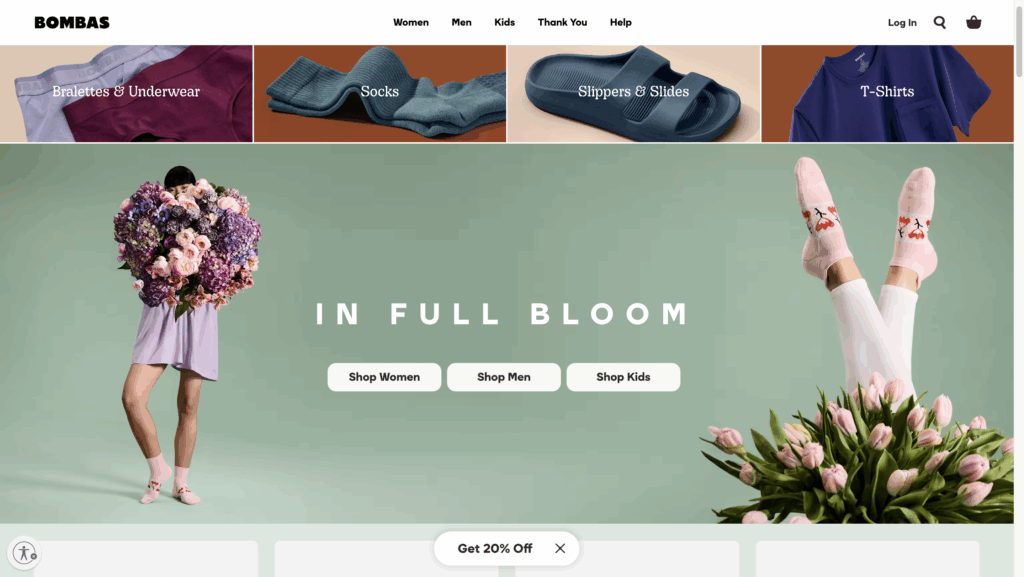
Shopify Store Example: Bombas
Bombas has perfected the art of the product page. They don’t just sell socks; they sell comfort and thoughtful engineering through a masterclass in visual storytelling.
The photography on their site is an art piece. Full of vibrant colors and creative compositions, the visuals create such a rich, editorial feel that you might forget you are shopping—it’s more like browse a high-end magazine. This premium presentation immediately elevates the product’s perceived value.
What other merchants can learn from this is that visual investment pays off. You don’t need a complex product to create a premium brand. By investing in high-quality, creative photography, you can transform a common item into a desirable, high-value product.
3. Build a Strong Brand Story and Identity
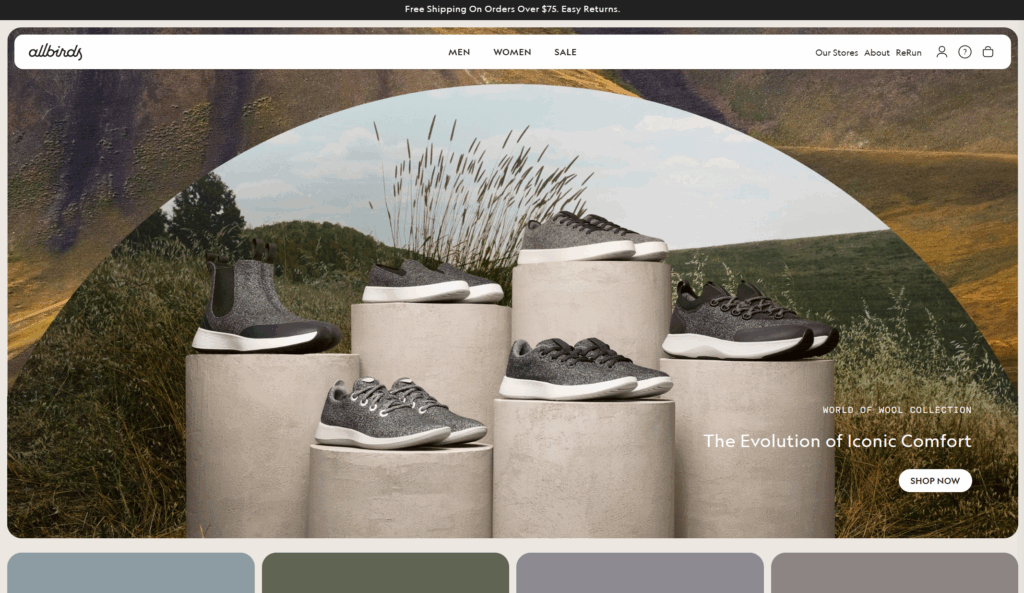
Shopify Store Example: Allbirds
A powerful brand story gives your business a “why” that customers can connect with emotionally, and Allbirds is a masterclass in how an authentic origin story can define an entire company.
The story started with a simple question from co-founder Tim Brown, then a professional soccer player. Tired of the flashy, over-designed sneakers he was given by sponsors, he wondered why no one was using his native New Zealand’s sustainable and incredibly soft Merino wool to create a simpler, more comfortable shoe. This authentic frustration was the spark for the entire brand.
That initial idea evolved into the core principles that define Allbirds today:
- Simplicity: A direct rejection of loud logos and flashy designs.
- Comfort: A relentless focus on how the product feels, not just how it looks.
- Sustainability: A deep commitment to using natural materials, which was the entire foundation of the original idea.
When you visit their website, you see this story everywhere. The minimalist design reflects “simplicity.” The detailed explanations of their wool, tree, and sugar cane materials showcase “sustainability.” This consistent narrative builds a powerful identity that is about more than just footwear; it’s about thoughtful design and responsible consumption, attracting customers who share these core values and creating an incredibly loyal community.
4. Deliver Exceptional, Memorable Customer Service
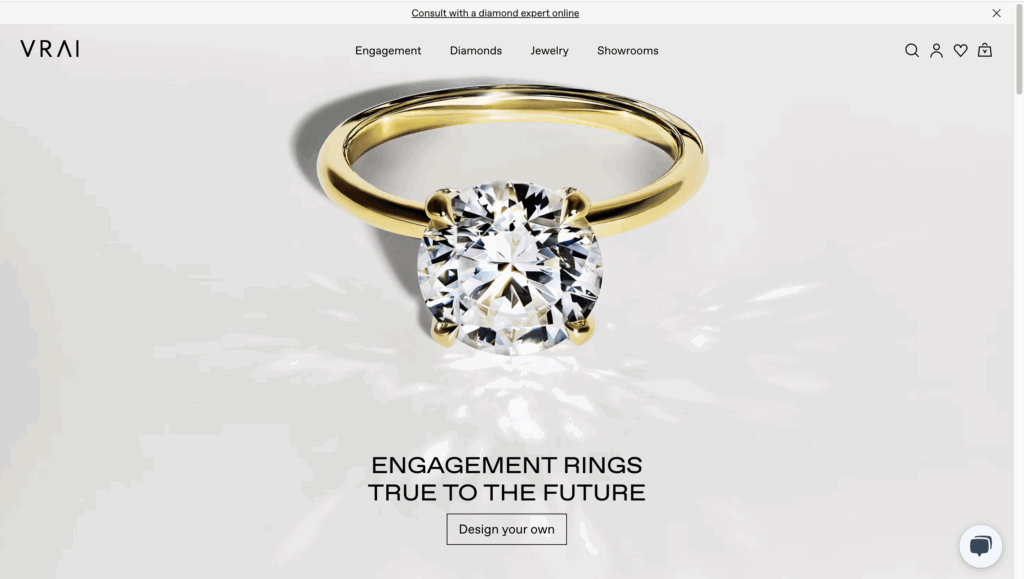
Shopify Store Example: VRAI
When a purchase is expensive, complex, or emotional, customer service becomes the most critical part of your business. VRAI, which sells lab-grown diamond jewelry, has mastered the art of building trust for high-stakes online purchases through direct, personal interaction.
Their challenge is immense: how do you give someone the confidence to buy an engagement ring online? Their solution is to replicate the traditional, consultative jeweler experience digitally. They offer free virtual appointments with their team of diamond experts.
During a one-on-one video call, a customer can receive personalized guidance, inspect diamonds up close via a high-definition camera, and have all their questions answered by a true professional. This isn’t a chatbot or a generic FAQ page; it’s a dedicated, high-touch consultation that demystifies a complex purchase and builds a personal, trusting relationship between the customer and the brand.
The lesson is clear: the more consideration your product requires, the more valuable direct human interaction becomes. By offering expert guidance, you eliminate anxiety and give customers the confidence they need to make a major purchase online.
Final Thoughts
Ultimately, the one-product model is about obsession—falling in love with a problem and creating the single best solution for it. As we’ve seen from brands like Oura and Allbirds, success requires a truly remarkable product and a story that connects with people.
If you have that one brilliant idea you believe in, this focused approach is one of the most powerful ways to build not just a business, but an icon.
Frequently Asked Questions
Q: How do I choose a hero product for a single one product shopify store?
A: A winning product for a single-product store typically has three characteristics: it has an appealing factor (visually appealing for ads), it solves a painful problem, and it better has a high profit margin (to lower the cost pressure).
Q: Can I start a store with one product?
A: Yes, absolutely. Actually it is often the most efficient way for beginners to enter e-commerce with lower upfront risk. Many successful global brands, such as Qura, Bomas, AllBirds started with just a single focus product. Starting with one product allows you to concentrate your budget and energy on perfecting that specific item, defining a clear target audience, and building a strong brand identity without the complexity of managing a large inventory.
Q: How to create a one product shopify store?
A: Creating a one-product store on Shopify is just the same as building any general store on Shopify. It involves 5 key steps:
- Product Research: Find a high-demand problem-solving product with good profit margins.
- Shopify Setup: Sign up for Shopify, pick a good store name (very important) that reflects your niche.
- Select a Theme: Choose a theme for one product Shopify store optimized for single products that highlights visual storytelling.
- Build Your “Hero” Page: Design your main landing page. Include high-quality images, benefits-driven copy, and social proof (reviews) above the fold.
- Marketing Launch: Drive traffic using targeted ads or influencer marketing to test the product’s market fit immediately.


